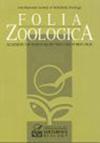Food and foraging preferences of the edible dormouse Glis glis at two sites in Poland
Q2 Agricultural and Biological Sciences
引用次数: 9
Abstract
Abstract. Food preferences of the edible dormouse were revealed with the use of radio-tracking. Studies were conducted on two plots in July and August of two years: one year with good beech (Fagus sylvatica) mast and the second with poor beech mast. Study plots were located in Roztocze National Park (RNP) where beech constituted about 80 % of the tree stand) and in Sieraków Landscape Park (SLP) where beech formed about 30 % of the tree stand. Six individuals (three males, three females) were radio-tracked in both years on each plot. Every animal was radio-tracked during four nights by using continuous recording during which the duration of foraging on particular tree species was recorded. On both study plots, the dormice foraged mostly on the common beech, eating both ripe fruit, ripening fruit and vegetative parts of trees. In a beech mast year, on both study plots, the animals foraged on the beech (both July and August) and on the fir Abies alba in RNP and on the common hazel Corylus avellana in SLP (in August). Bigger differences in diets between the two populations studied were found in a non-mast year, resulting from differential foraging and exploitation of subdominant tree and bush species on the plots. The dormice foraged mostly on food that was characterized by the highest nutritional value at a given time.波兰两个地点食用睡鼠Glis Glis的食物和觅食偏好
摘要利用无线电跟踪技术揭示了可食睡鼠的食物偏好。研究分2年7月和8月进行,1年为优良山毛榉(Fagus sylvatica)株,2年为不良山毛榉株。研究地块位于Roztocze国家公园(RNP)和Sieraków景观公园(SLP),其中山毛榉占树木的80%左右,山毛榉占树木的30%左右。在两年内对每个地块的6只个体(3只雄性,3只雌性)进行无线电跟踪。每只动物在四个晚上通过连续记录的方式进行无线电跟踪,记录在特定树种上觅食的持续时间。在这两个研究地块上,睡鼠主要以普通山毛榉为食,既吃成熟的果实,也吃成熟的果实和树木的营养部分。在山毛榉生长的年份,在两个研究地块上,动物在RNP的山毛榉(7月和8月)和冷杉(Abies alba)以及SLP的普通榛子(Corylus avellana)上觅食(8月)。在非丰年,两个种群的食性差异较大,这是由于在样地对亚优势树种和灌木种的不同觅食和利用造成的。睡鼠主要以在特定时间内营养价值最高的食物为食。
本文章由计算机程序翻译,如有差异,请以英文原文为准。
求助全文
约1分钟内获得全文
求助全文
来源期刊

Folia Zoologica
生物-动物学
CiteScore
1.70
自引率
0.00%
发文量
0
审稿时长
3 months
期刊介绍:
Information not localized
 求助内容:
求助内容: 应助结果提醒方式:
应助结果提醒方式:


